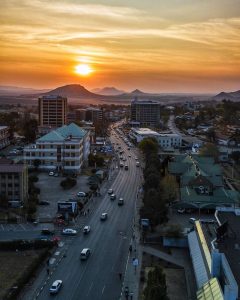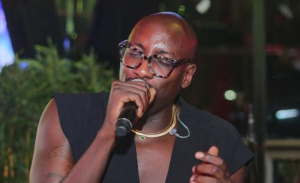Situation unclear in Goma as M23 rebels claim they have captured the eastern DRC city
3 min readThe situation in Goma, a key city in eastern Democratic Republic of Congo (DRC), remains uncertain after reports emerged that M23 rebels, allegedly backed by Rwanda, entered the city on Monday morning. The rebel group claimed in a statement that it had successfully captured the provincial capital, which has a population of over two million, including both residents and internally displaced people.
However, eyewitness accounts from within the city suggest that while the atmosphere is tense, the full extent of the situation remains unclear. Africanews’ correspondent in Goma noted that local videos did show the presence of rebels in some neighborhoods, but there were also conflicting reports. Some areas of the city are reportedly facing resistance from the Wazalendo, a militia group allied with the Congolese army. This has led to violent clashes, complicating efforts for those trying to flee the violence. Travel within the city is described as extremely dangerous, as gunfire was reported near the airport and along the border with Rwanda.
In the midst of these developments, there are growing concerns about the stability of the region. As the violence escalates, the East African Community (EAC), a regional political and economic bloc, has called for an urgent meeting within the next 48 hours to discuss the ongoing conflict and seek ways to end the fighting. This meeting reflects the increasing pressure on regional leaders to address the crisis and find a peaceful resolution.
As the situation unfolds, many people in Goma have attempted to cross into Rwanda to escape the fighting. However, European sources have reported that the border between the DRC and Rwanda has been closed, further complicating the efforts of civilians to seek safety. The closure of the border leaves residents with few options for fleeing the conflict, heightening their vulnerability to the ongoing violence.
The current conflict in Goma is part of the broader unrest in the eastern DRC, where tensions between the Congolese government and the M23 rebels have been simmering for years. The M23 group, which is accused of receiving support from Rwanda, has previously captured significant territories in the region. This ongoing violence has led to the displacement of millions of people, creating one of the largest humanitarian crises in Africa.
The DRC has long been a hotbed of conflict, with various rebel groups fighting for control over the mineral-rich eastern regions of the country. The situation in Goma highlights the complexities of the conflict, with multiple armed groups vying for control, and the involvement of neighboring countries such as Rwanda further complicates the dynamics.
International calls for a ceasefire and peace talks have been made, but the path to peace remains elusive. The UN and other international bodies have urged for humanitarian corridors to allow aid to reach those in need, as the violence continues to take its toll on civilians. As the fighting intensifies, the people of Goma and the surrounding areas face an uncertain future, with little clarity on when the violence will end or whether peace can be achieved.
As the international community watches closely, efforts to mediate the conflict will likely intensify, but it remains to be seen whether regional cooperation, such as that being sought by the EAC, can bring about a lasting resolution to the crisis. In the meantime, the situation in Goma remains fluid, with civilians trapped in the crossfire of ongoing battles and the city itself at the center of a dangerous and rapidly evolving conflict.
Source: African News Agency







